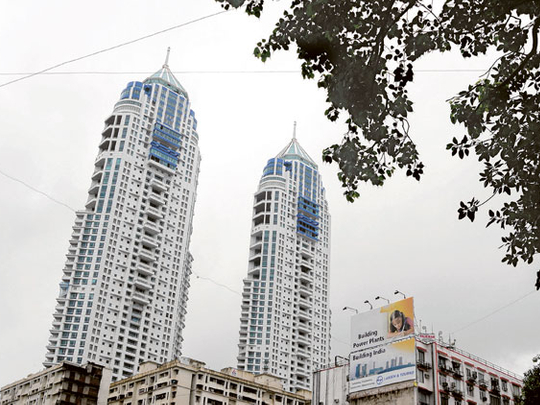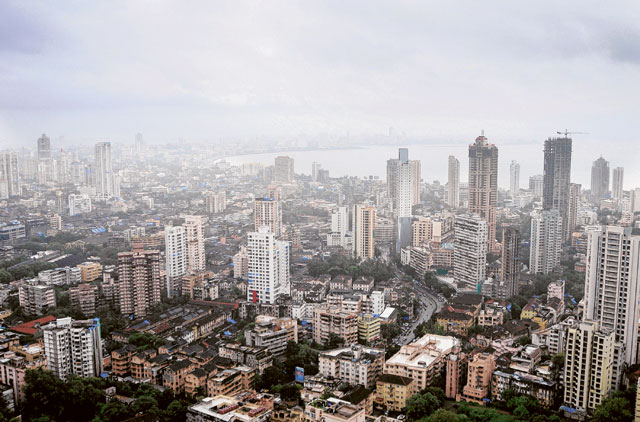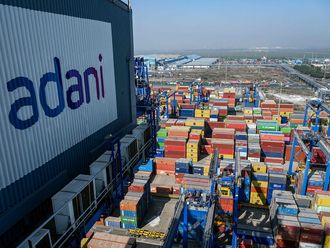
The non-resident Indians (NRIs) in the UAE and Gulf who purchased property back home in December have already benefited in the short term after the Indian rupee touched a new low last month and has since gained 6.4 per cent. This does not mean investors who hesitated then have missed the boat.
The currency advantage remains and with some developers offering discounts in price, or at least a few amenities to sweeten the deal, it's still a good time to shop around, according to market observers.
The value of the rupee dipped on December 15 to fetch Rs14.62 to a dirham. Friday the conversion rate was Rs13.68. While currency fluctuations do offer a good entry point, analysts insist that property investors nowadays need to think long term.
"The [currency] bargain advantage still holds true, provided that the NRI is looking at an investment horizon of at least five years plus," says Om Ahuja, chief executive of residential services at Jones Lang LaSalle, India.
Word of advice
One should not expect exponential price appreciation in three to six months as in the past, says Anshuman Magazine, chairman and managing director, CB Richard Ellis, South Asia.
"So, anybody investing should look at the longer term — at least three to five years, and the good part of having such a horizon is the Indian economy is growing and economic development has to happen," he says.
It's unwise to time the market when there is continued currency fluctuation. In the coming months, if the rupee does become weaker, and interest rates remain unchanged in India, NRIs will be at a greater advantage as they will get a better conversion rate. But as Pradeep Unni, head of trading and research at Richcomm Global, a commodity risk management firm and brokerage in Dubai, says, if the reverse happens and the rupee inches higher, the Reserve Bank of India may cut rates and Indian growth may accelerate which will increase the valuation of the properties that they have bought. Currency hedging may be a good idea to tackle the uncertainty. NRIs, especially in the Gulf, could hedge their INR [rupee] exposure for the entire value through the INR contract traded on the Dubai Gold and Commodities Exchange [DGCX], Unni says.
While the recent depreciation of the rupee has indeed given a temporary benefit when it comes to property acquisition, it might not be beneficial if one has a longer term loan to repay.
Demand-supply equation
"[This currency advantage] does have a positive impact if we are talking of an outright purchase of a property," says Krishnan Ramachandran, chief executive of Barjeel Geojit Securities, a Dubai-based financial advisory and investment firm catering to non-resident Indians of the region. "When you have a 15-year loan repayment obligation the opportunity for gain or loss will eventually balance out."
Buyers are also warned against investment decisions based on rental yield expectations. Though it is difficult to have an average figure for rental yields for the entire country, it's really low. "I would say it has been 2 per cent or even less if you take out capital appreciation," Magazine says.
Considering the demand for residential units outstripping supply, capital appreciation is the key aspect to look at before investing in property. While prices in Delhi or Mumbai have appreciated by more than 30 to 40 per cent in the last two to three years, in the case of smaller cities it could be six to 10 per cent, Magazine says.
"I don't think you can have one single average annualised return anymore [for the entire country]," Magazine says.
"That's because the market in India has expanded, is now fragmented, and it has got different segments within the city."
With interest rates likely to somewhat ease in the coming months, an uptrend in the demand for properties is expected.
That leads market experts such as Ahuja to see opportunities in specific corridors. Quite a few pockets still offer value opportunities, he notes.
Ahuja and Magazine are bullish on cities that offer high economic activity and job creation. Suburban locations of Delhi, that is the National Capital Region (NCR), and Mumbai are good bets, says Magazine. According to Ahuja, growth corridors like Hyderabad, Chennai, Bengaluru, Pune and Gurgaon, offer better risk-reward patterns.
Some other cities like Ahmedabad, Bhopal, Cochin, Coimbatore and Lucknow, where properties are cheaper, also offer opportunities, Magazine says.
"Some people with a lower budget can afford the entry point [in these Tier 2 cities] but then the gestation period is longer than in the bigger cities," he adds.
Overall, the market is competitive and with a drop in sales, there will be a few who will offer small concessions such as free registration and no stamp duty. Not every developer is offering this and some may not lessen the price but throw in free amenities such as a fitted kitchen or a bathroom, says Magazine.
"There may not necessarily be a ‘big bargain' in terms of a good overall price, especially in the major cities where although there's been a drop in sales, prices have held up."
Also, interest rates are expected to fall and there might be some price correction in some smaller real estate markets — not necessarily in the major cities — in India, he notes.
"If you go to Tier 2 cities or peripheries, maybe you will be able to get better deals than before," Magazine says.













